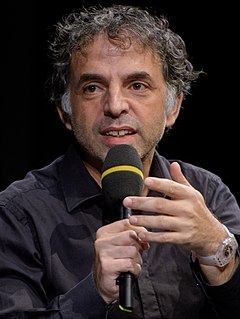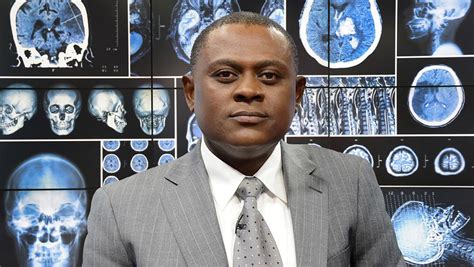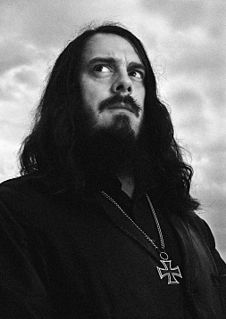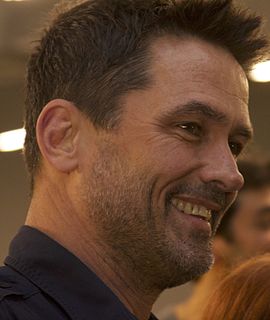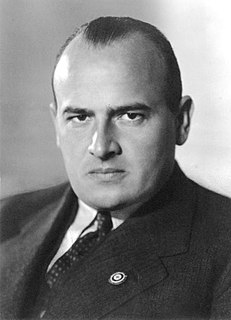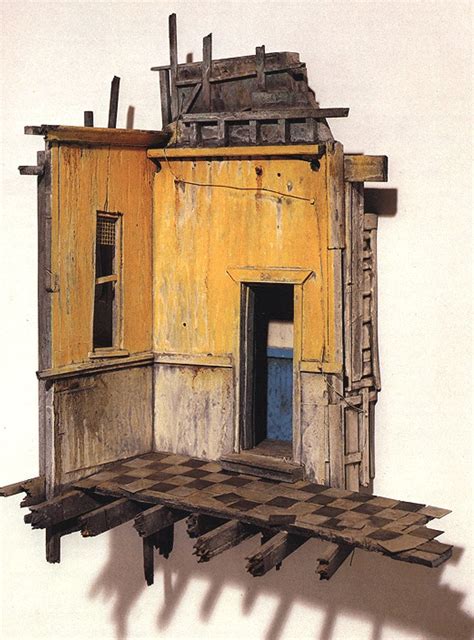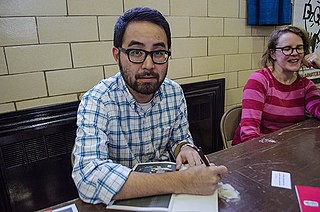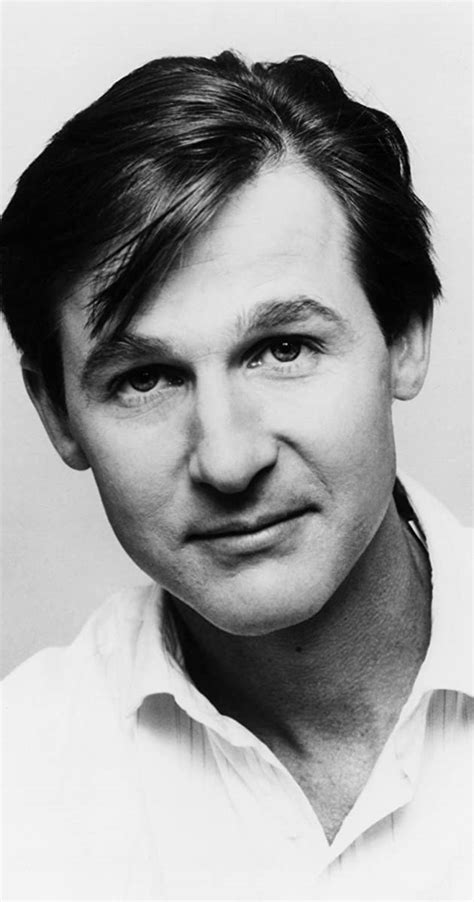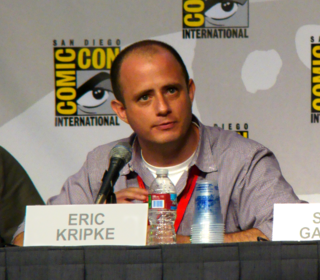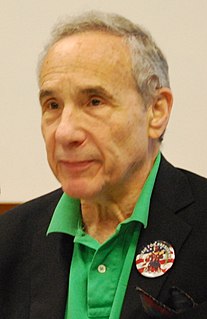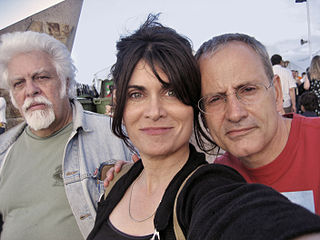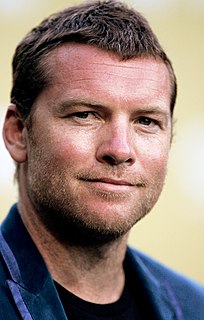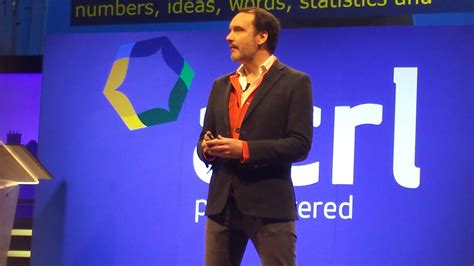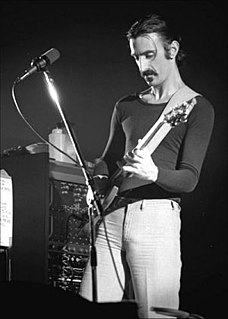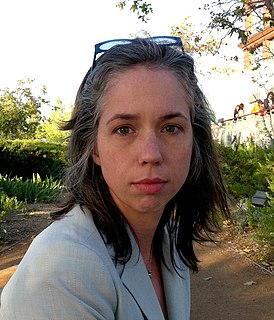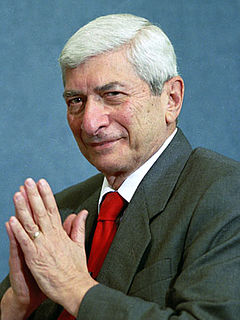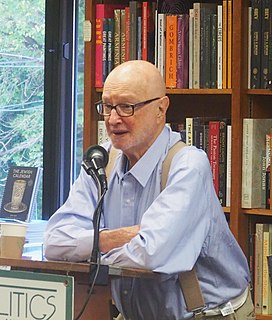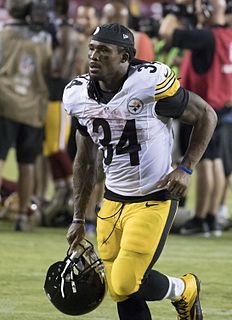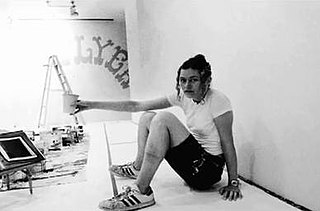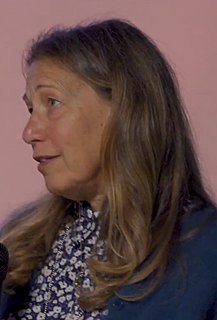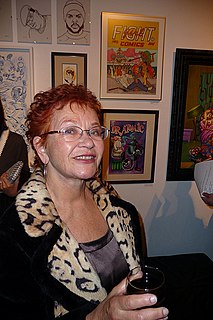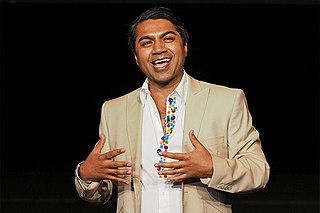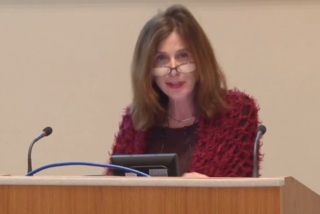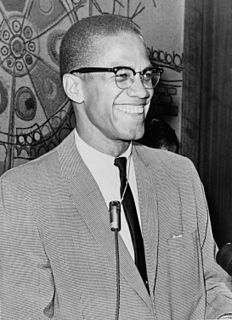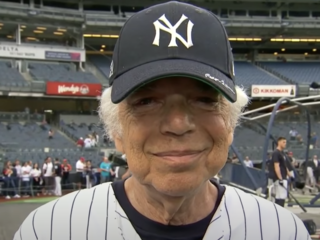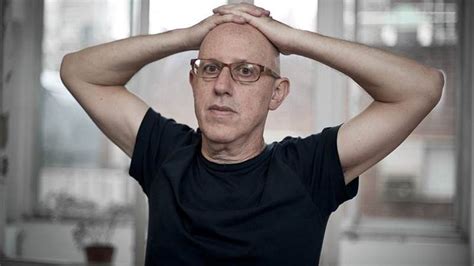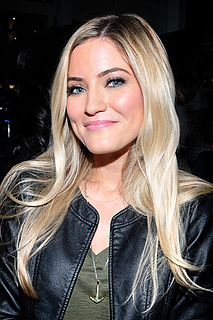Top 477 Graphic Quotes & Sayings - Page 8
Explore popular Graphic quotes.
Last updated on April 15, 2025.
I guess I consider myself a cartoonist first, though I was "trained" as a painter/printmaker/sculptor. If there's still any resistance to cartooning in the nuts-and-bolts world of acquiring the means of survival, it's probably mostly on the pay scale. If graphic novels are selling really well and are "growing the book market" or whatever it is a businessman would say about them, I don't see it in the remuneration offered by some of the publishers.
There are many graphic artists who have interpreted The Ancient One as a Tibetan Buddhist Lama, we're kind of shifting that a bit. We're trying not to be fixed, we're trying not to be fixed to any one thing, any one gender, any one spiritual discipline, and any one race even; we're just trying to wing it beyond that. So it's a new gesture really, just another interpretation.
I try to employ a different strategy for each story. Often, I'll have a specific look in mind before I even have the story to go with it. I'm not so much interested in forcing the issue of reader identification through various graphic tricks. I'm more interested in creating specific characters that resonate with my own particular inner struggles.
I guess I could be singing about Superman, or about Zarathustra coming down from the mountain, but in my mind I was singing about Julian Assange. I wish I could say that Nietzsche inspired my lyrics but all I can honestly say is I was inspired by the graphic design of these '70s paperback covers for Beyond Good & Evil and The Birth of Tragedy and The Gay Science.
No, no, I don't watch football. The last time I tried watching was the last Super Bowl. The problem I have is, you know, the graphic nature of my imagination; when I watch and see them meeting head onto head, helmet onto helmet, what flashes through my mind is what's going on in their brains. It's like torture to me.
Jonathan Meese is not interested in the history of reality. Everything radical and precisely graphic is sustainable. Human ideologies like religions and politics are based on the past and therefore irrelevant to art. Art always transforms radicalism of the past into the future. Art is always the total time machine. Jonathan Meese is interested in the history of the future. Art is never nostalgic.
Now I'm in nonfiction. To me any given story has its appropriate form. There might be some story I get involved with that's begging to be a graphic novel, so that will have to be that way. There's always that matching of the content and the form, and that means everything to me. I spend years thinking about what that match is going to be before I can really make it work.
I think self-portraits are very difficult. I’ve always seen mine as straightforward, very stripped down, hair pulled back. No shirt. Whatever light happened to be available. I’d want it to be very graphic – about darkness and light. No one else should be there, but I’m scared to do it by myself. I’ve been thinking about it for a long time. The whole idea of a self-portrait is strange. I’m so strongly linked to how I see through the camera that to get to the other side of it would be difficult. It would be as if I were taking a photograph in the dark.
There were [in Wilson] a lot of clues in it that you don't normally get, you know, normally you use your imagination or whatever, you get some clues in the script, of course, but yeah, it was really helpful, and I really like the graphic novel. There's stuff in there, there's a couple things in there I really wanted to use that they couldn't get in the movie, but it's definitely, he's a unique guy, you know, I never read a character like this before.
Sometimes, violent details have been eliminated from fairy tales simply because they were deemed too graphic. So one does not, at the end of Disney's version of 'Cinderella,' see the stepsisters' eyes get pecked and pecked by doves, because Disney wanted to market the story for wholesome family viewing.
I can tell you a graphic difference. In Prague, for example, big red posters were put up on which could be read that seven Czechs had been shot today. I said to myself: If I put up a poster for every seven Poles shot, the forests of Poland would not be sufficient to manufacture the paper for such posters.
I love the idea of engaging the object, whether it be architecture or a piece of good graphic design, or a good painting, or piece of sculpture, or even a piece of industrial manufactured object. A piece of engineering can be quite beautiful, too, or a photomicrograph, or a cosmic photograph. We're physical beings and why deny that. So in that sense, it's very sensual to have an object that has the power to communicate some emotion or a state or give you some sense.
Just in terms of being able to be a professional artist, but also it's nice to not have to dread introductions. "What you do for a living?" It used to be easier just to tell people that I was a magazine illustrator than try to explain that I did comics, but not the kind of comics that they were used to, and no, it's not pornography, etc. And now people even of our parents' generation are familiar with the term "graphic novel," which is kind of amazing.
Once again decent citizens will be able to enter this house of worship, kneel down in front of a nearly-naked man hanging from a wooden apparatus by a series of gruesome body piercings, and engage in their bizarre practices of ritualized blood-drinking and cannibalism without being assaulted by graphic images of attractive young women with bare breasts.
As I got older, my ambitions changed and I wanted to be a graphic designer. In form five, I did Art for CXC and got a grade 2 at the general proficiency level. I was devastated because I was aspiring for a grade 1. I took a break from art when I went to A level because I could not cope with the disappointment of my Grade 2. But I guess when you love doing something you just can't turn you back on it completely.
Part of battle has been getting Hollywood to recognize that comic books and superheroes are not synonymous. That's been a huge breakthrough, just in recent years really, and as a result of that recent breakthrough, we've had movies like 300, Road to Perdition, and A History of Violence, that very few people realize were based on comic books and graphic novels. It's very important to make that differentiation.
I used to publish these stories in 32-page comics, and I would either do short stories or break the long ones up into chunks so there would be some variety inside the comic. But since then, people have been doing more and more long, standalone works, and the term 'graphic novel' has sort of become the codified term now.
It's a lonely world, being independent, and they can come away with the idea that if Lloyd Kaufman can make movies with people getting their heads squashed, with hard-bodied lesbians, women masturbating with pickles, graphic diarrhea, and singing and dancing chicken zombies - if he can do that for 40 years and put his kids through Yale, Columbia, and Duke - if that idiot can do it, anybody can do it.
I started designing book jackets, which was great because I was good at it. And then from there I decided to become a freelance graphic designer and I needed to expand beyond book jackets, so I taught myself web design, and then in 1999 some friends of mine decided to start a company called Xanga.com, which was a very early kind of social network slash blogging community.
I don't think it's possible to teach a person to be an artist. But yet, I'm here, and I suppose this is what I'm expected to do. I teach a course called graphic narrative and one called digital studios, but no matter the topic, the basic principle underlying my "method" of teaching is that a properly prepared artist/creator must simply know everything. Not just how to draw, but how to see. Not just how to use a computer program, but what the word "penultimate" means. And the shape and orientation of a goat's pupil. And where Kentucky and Chile are, at least approximately.
If you look at the whole world now it's just computer games, graphic novels, film, TV spinoffs, spinoffs of spinoffs like Deadpool spinning off of Wolverine. So I think that any kind of smart producer looks at all of those bases. Once it comes down to the integrity of it audiences are very smart, they smell that they're just kind of being played.
Simplification seems to be the removal of objects for the goal of making a graphic as clean and uncluttered as possible. Whereas, with optimization, it feels like there's more intelligence in that. It maintains the usability, but tries to distill something down to its essence. But with some data-sets you have to be careful because, as with linear, print journalism, it's easy to shave off facts that don't quite fit the flow.
Whenever summer rolls around I begin to realize that I'm a complete and utter book snob. In relation to reading, I have absolutely no guilty pleasures at all. No graphic novels. No murder mysteries. My summer read is really no different from my winter read. I know many bookshops and magazines would have me believe that our summer forays are different, but literature is literature, and unfortunately snobbery is snobbery.
Anybody hear the great news, today? Jimmy Swaggart under investigation! Oh Ja-eezus! One day every one of those cocksuckers will get caught! I understand in the case of Mr. Swaggart, that he claims that it was not multiple encounters with many prostitutes - apparently, only one sweet young thing. And he did tell Cal Thomas of the Moral Majority that the sex act itself was not fully consumated. However he did admit to doing something por-no-graphic with the girl. Let's use our imaginations, ladies and gentlemen.
Cartooning is completely different from other media: it is closely related to film and prose, other narrative forms, but the skills needed to realize a story are very different, and include not only drawing and writing dialogue and narration, but graphic design and the ability to depict time passing visually. It's a whole suite of skills that has to go into making a comics page, skills that are quite distinct from those that go into writing a page of prose, or making a film.
Matt Drudge's role in the Monica Lewinski scandal] strikes me as a new and graphic power of the Internet to influence mainstream journalism. And I suspect that over the next couple of years that impact will grow to the point where it will damage journalism's ability to do its job professionally, to check out information before publication, to be mindful of the necessity to publish and broadcast reliable, substantiated information.
A different kind of pleasure surfaced in the aftermath, the pleasure of seeing the towers fall time and again, the experience of being entranced by the visual spectacle, and then also the very graphic forms of public mourning for exemplary citizens (taking place at the same time as the refusal to mourn the undocumented, the foreign, gay and lesbian lives lost there, for example). I am not sure that the guilt over the pleasure re-installed the good citizen.
Our cover has always been really important. For those of you who haven’t seen itCharles Burns, who is a graphic artist, does four portraits, so it’s split into quadrants and there’s four heads, basically—portraits of people. We’ve actually often thought and freaked out, what if something happened to Charles Burns? Because he’s so identified with the cover of our magazine, I don’t know what we would do if anything happened to Charles Burns.
It’s not easy to find old-school journalism in true crime … yet with Lethal Intent, author Sue Russell proves how integrity, tenacity, brutal truth and honest reporting become essential components to what is a riveting—if not terrifying—narrative of America’s most hated ‘monster,’ Aileen Carol Wuornos. It’s not easy humanizing serial killers, but through an objective lens, clear and defined, Russell paints a graphic portrait of Wuornos’ evil intentions and rough life—a true page-turner, breathless, intense—but also important.
Having a background in doing printmaking and letterpress, I think that I became very interested in images that were flat and graphic. And my painting still today is very flat...American craft is like that too - the painting is very flat. And also the painting that you see on the storefronts, handmade signs, tend to be very flat. That's probably my biggest influence.
I often notice how students can gain the capacity to use certain critical methodologies through engaging with very different texts - how a graphic novel about gentrification and an anthology about Hurricane Katrina and a journalistic account of war profiteering might all lead to very similar classroom conversations and critical engagement. I'm particularly interested in this when teaching law students who often resist reading interdisciplinary materials or materials they interpret as too theoretical.
People say graphic design is so different now, because you have so many more pixels and colors to work with... But when you study art history, you see there's just nothing new under the sun. Mosaics and needlework, it's all analogous to pixel and bitmap art. And with it all, good design's not about what medium you're working in, it's about thinking hard about what you want to do and what you have to work with before you start.
Today, although as a whole, the industry is still male-dominated, more women are drawing comics than ever before, and there are more venues for them to see their work in print. In the 1950s, when the comic industry hit an all-time low, there was no place for women to go. Today, because of graphic novels, there's no place for aspiring women cartoonists to go but forward.
My platform has been to reach reluctant readers. And one of the best ways I found to motivate them is to connect them with reading that interests them, to expand the definition of reading to include humor, science fiction/fantasy, nonfiction, graphic novels, wordless books, audio books and comic books.
I think that people are really hungry for original content. I think there's a sense of reboots and remakes, and we're lacking in any sense of originality in media. So, I think the people who want something like this which has a graphic novel feel or comic book feel but that is designed and created for the medium of television, I think that is something is very appealing to a lot of people.
I've seen a tremendous shift especially in indie comics. I see all these young women who are out there creating. They're making these great web comics. Their graphic novels are getting published. They're making all this wonderful art. They're powerful. There's this vital energy about it that's really, really beautiful that years ago I knew existed but I didn't see so clearly.
In my head, the 5 issues of A Spoon Too Short comprise one novel: a 100 page graphic novel sequel to Douglas' two Dirk books, taking some of the ideas he was working on before he died, and a whole bunch of new stuff from me and a little from Max Landis (who is the Executive Producer on the book as well as writing the forthcoming TV series).
In Mexico, muralism is an important part of the artistic vocabulary, and it has a very different place than it does in the US. Here, you see mainly commercial signage and dead slick graphic works, or murals that are incredibly narrative and littered with too much content - bad political art. But in Mexicali, all kinds of artists work with mural art. In Mexicali, the social practice of art existed in a completely authentic and unselfconscious way.
At the bottom of the social heap is the black man in the big-city ghetto. He lives night and day with the rats and the cockroaches and drowns himself with alcohol and anesthetizes himself with dope, to try and forget where and what he is. That Negro has given up all hope. He's the hardest one for us to reach, because he's the deepest in the mud. But when you get him, you've got the best kind of Muslim. I look upon myself as a prime example of this category - as graphic an example as you could find of the salvation of the black man.
For me accessories create and define a woman's personal style. The bag she carries, the watch on her wrist, her jewelry, her sunglasses, her shoes all define a look that is her signature. For Spring 2014, my accessory collections are about a clean, graphic boldness creating a new dimension redefining modern classics.
Art uses many different styles, but his voice is very consistent. He's always concise and clever and funny. That's true of somebody like Chris Ware, who has an emotional quality to his work - but it's boiled down and it's very sober and spare. Each word has great weight. Comics are not just pictures, but it is graphic design in the sense that they are composed and architected in a specific way.
Perhaps the most striking thing about the 2015 State of the Union address was not the president at the podium but the audience in the seats. The joint session of Congress listening to President Obama Tuesday night included 83 fewer Democrats than the group that heard Obama's first address in 2009 - 69 fewer Democrats in the House and 14 fewer in the Senate. The scene in the House Chamber was a graphic reminder of the terrible toll the Obama years have taken on Capitol Hill Democrats.
Not to say that the process assumes anything of "greater" or "lesser" importance, though: it's just more graphic information. Take the surrealists, for example, or a work by Cage. For me, there's a great value in doing this with literature. There's a certain form of dependence; process and product inform each other, depend on each other. I consider myself a writer who doesn't write with a style, almost. I begin with tension, with a vibe, a character.
I've always taken apart calculators and anything I can get my hands on when I was younger. When I was around 12 - like, 6th grade - my parents always had around Mac computers because my mom is a teacher. So I'd always be playing around with all the crazy applications and making banners and printing things out and always into graphic design.
Julio's Day is a story of one man's life, but it's a great more than that as well. It's the story of the life of a century, also told as if a day. Beginning with Julio's birth in 1900 and ending with his death in 2000, the graphic novel touches on most of the major events that shaped the 20th century.
I wanted to be a graphic designer from the time I was 15, without ever having actually met one. I lived in the mid-west, not in a media centre, and I didn't know anyone who did that for a living. It took me a while to find out what that thing I wanted to do was actually called, but once I sorted that out I got really interested in it.
In the beginning I was really, really lean. For the longest time I did it all. I played every hat. I was in the factory, doing the graphic design, the photography, the selling - literally everything. I saved money doing what I could myself. It was hard but I learned. I learned that nobody's better than you to get your business off the ground. The experience you get is priceless.
It was 4 or 5 years into my first design job before the idea of doing graphic design on computers started taking hold. I started working in 1980, the Macintosh was introduced in 1984, then the real desktop publishing only started coming around in 85-86, but it wasn't really until the end of the decade that the transition became irresistible.
